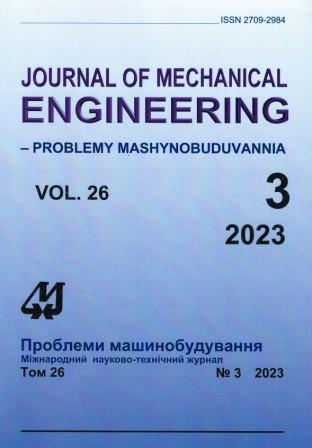Plasma Coatings Based on Self-Fluxing NiCrBSi Alloy with Improved Wear Resistance Properties
Abstract
The structure and properties of plasma coatings sprayed with a composite material based on a self-fluxing NiCrBSi alloy (PG-10N-01 alloy) modified with a composite material obtained by self-propagating high-temperature synthesis were studied. Titanium powders, carbon black, aluminum, iron oxide, PT-NA-01 thermosetting powder and PGOSA-0 refractory clay were used as the initial components of modified with a composite material. Mixing and mechanical activation of the initial powders was carried out in a BM-1 ball mill for 15 minutes at 130 rpm in a ratio of 1 to 40 of the mass of the charge to the mass of the falling bodies (steel balls with a diameter of 6 mm). Initiation of the self-propagating high-temperature synthesis was carried out using a special device by introducing a heated nichrome spiral. The process of coatings spraying was performed on the MPN-004 microplasma spraying unit at a current of 45 A, a voltage of 30 V with a distance of 100 mm on samples made of 65G steel with a thickness of 3 mm. Argon was used as a plasma-forming and shielding gas. In order to substantiate the feasibility of the self-propagating high-temperature synthesis, a part of the samples was sprayed with a self-fluxing alloy PG-10N-01 with the addition of a mechanical mixture of starting powders. It was established that as a result of plasma spraying of the PG-10N-01 alloy and the composite material of the modified with a composite material + PG-10N-01 composition, coatings with a dense and multiphase structure are formed. The microstructure of the PG-10N-01 alloy coating consists of a solid solution based on nickel (γ-Ni) with inclusions of nickel borides Ni3B and chromium carbides Cr3C2. When adding modified with a composite material in a nickel-based solid solution, in addition to the phases indicated above, borides of titanium TiB2, carbides of titanium TiC and silicon SiC were detected. Their presence leads to an increase in the microhardness of such coatings and their greater wear resistance under conditions of abrasive wear in comparison with the spraying coating of the PG-10H-01 alloy.
Downloads
Published
Issue
Section
License
Copyright (c) 2023 П. А. Ситников

This work is licensed under a Creative Commons Attribution-NoDerivatives 4.0 International License.
All authors agree with the following conditions:
- The authors reserve the right to claim authorship of their work and transfer to the journal the right of first publication of the work under the license agreement (the agreement).
- Authors have a right to conclude independently additional agreement on non-exclusive spreading the work in the form in which it was published by the jpurnal (for example, to place the work in institution repository or to publish as a part of a monograph), providing a link to the first publication of the work in this journal.
- Journal policy allows authors to place the manuscript in the Internet (for example, in the institution repository or on a personal web sites) both before its submission to the editorial board and during its editorial processing, as this ensures the productive scientific discussion and impact positively on the efficiency and dynamics of citation of published work (see The Effect of Open Access).

